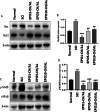Facile fabrication of an erythropoietin-alginate/chitosan hydrogel and evaluation of its local therapeutic effects on spinal cord injury in rats
- PMID: 34491566
- PMCID: PMC8602718
- DOI: 10.1007/s40199-021-00399-4
Facile fabrication of an erythropoietin-alginate/chitosan hydrogel and evaluation of its local therapeutic effects on spinal cord injury in rats
Abstract
Background and objective: Spinal cord injury (SCI) is a major disabling disorder for which no effective treatment has yet been found. Regenerative incapability of neuronal cells as well as the secondary mechanisms of injury are the major reasons behind this clinical frustration. Thus, here we fabricated an erythropoietin-chitosan/alginate (EPO-CH/AL) hydrogel and investigated its local therapeutic effects on the apoptotic and inflammatory indices of SCI secondary injury.
Methods: EPO-CH/AL hydrogels were fabricated by the ionic gelation method, and they were characterized using SEM and FTIR. In vitro drug release profile of EPO-CH/AL hydrogels was evaluated by UV-vis spectroscopy. Experimental SCI was inflicted in rats which were then treated with CH/AL hydrogels containing different doses of EPO (1000, 5000 and 10,000 IU/kg). The relative expression of Bax and Bcl2 (apoptosis index) and active and inactive forms of NF-κB (inflammation index) were assessed using western blot. Total serum levels of TNF-α were also assessed with ELISA, and histopathological and immunohistochemistry studies were carried out to check the overall changes in the injured tissues.
Results: In vitro drug release test indicated that the EPO-CH/AL hydrogels had a sustained- and controlled-release profile for EPO under these conditions. All the fabricated hydrogels dramatically reduced the elevated inflammation and apoptosis indices of the SCI-inflicted rats (p ≤ 0.05). Nevertheless, only EPO-CH/AL hydrogel (1000 IU/kg EPO) significantly improved the tissue repair and histopathological appearance of the spinal cord at the sites of injury.
Conclusion: Based on our findings, EPO-CH/AL hydrogel (1000 IU/kg EPO) can effectively improve experimental SCI in rats via inhibiting apoptosis and inflammation. Further studies are warranted to elucidate the contributing role of the scaffold in the observed effects.
Keywords: Alginate; Apoptosis; Chitosan; Erythropoietin; Inflammation; Spinal cord injury.
© 2021. Springer Nature Switzerland AG.
Conflict of interest statement
The authors have no conflicts of interest to declare.
Figures







Similar articles
-
Therapeutic effects of erythropoietin-alginate/chitosan hydrogel on impaired male rat fertility after spinal cord injury.Mol Biol Rep. 2025 Jan 18;52(1):137. doi: 10.1007/s11033-025-10224-9. Mol Biol Rep. 2025. PMID: 39826030
-
Combination Therapy With Hyperbaric Oxygen and Erythropoietin Inhibits Neuronal Apoptosis and Improves Recovery in Rats With Spinal Cord Injury.Phys Ther. 2019 Dec 16;99(12):1679-1689. doi: 10.1093/ptj/pzz125. Phys Ther. 2019. PMID: 31504911
-
Protection of erythropoietin on experimental spinal cord injury by reducing the expression of thrombospondin-1 and transforming growth factor-beta.Chin Med J (Engl). 2009 Jul 20;122(14):1631-5. Chin Med J (Engl). 2009. PMID: 19719963
-
Erythropoietin in spinal cord injury.Eur Spine J. 2009 Mar;18(3):314-23. doi: 10.1007/s00586-008-0829-0. Epub 2008 Nov 22. Eur Spine J. 2009. PMID: 19030901 Free PMC article. Review.
-
The use of erythropoietin and its derivatives to treat spinal cord injury.Mini Rev Med Chem. 2011 Aug;11(9):763-70. doi: 10.2174/138955711796355267. Mini Rev Med Chem. 2011. PMID: 21707531 Review.
Cited by
-
Erythropoietin to Treat Spinal Cord Injury: Evaluation of Different Doses and Magnitudes of Trauma in Rats.Global Spine J. 2025 Jun;15(5):2617-2633. doi: 10.1177/21925682241306106. Epub 2024 Dec 9. Global Spine J. 2025. PMID: 39652832 Free PMC article.
-
Nanocrystalline cellulose-geniposide complex enhances gut-brain axis modulation for depression treatment.Commun Biol. 2025 Apr 26;8(1):667. doi: 10.1038/s42003-025-07934-y. Commun Biol. 2025. PMID: 40287572 Free PMC article.
-
Application of Injectable Hydrogels as Delivery Systems in Spinal Cord Injury.Gels. 2023 Nov 16;9(11):907. doi: 10.3390/gels9110907. Gels. 2023. PMID: 37998998 Free PMC article. Review.
-
Facile fabrication of selegiline-loaded alginate hydrogel for neuroprotection and functional recovery in a rat model of spinal cord injury through localized spinal delivery.Iran J Basic Med Sci. 2025;28(5):627-637. doi: 10.22038/ijbms.2025.81837.17706. Iran J Basic Med Sci. 2025. PMID: 40666188 Free PMC article.
-
Current Concepts of Biomaterial Scaffolds and Regenerative Therapy for Spinal Cord Injury.Int J Mol Sci. 2023 Jan 28;24(3):2528. doi: 10.3390/ijms24032528. Int J Mol Sci. 2023. PMID: 36768846 Free PMC article. Review.
References
MeSH terms
Substances
LinkOut - more resources
Full Text Sources
Medical
Research Materials

